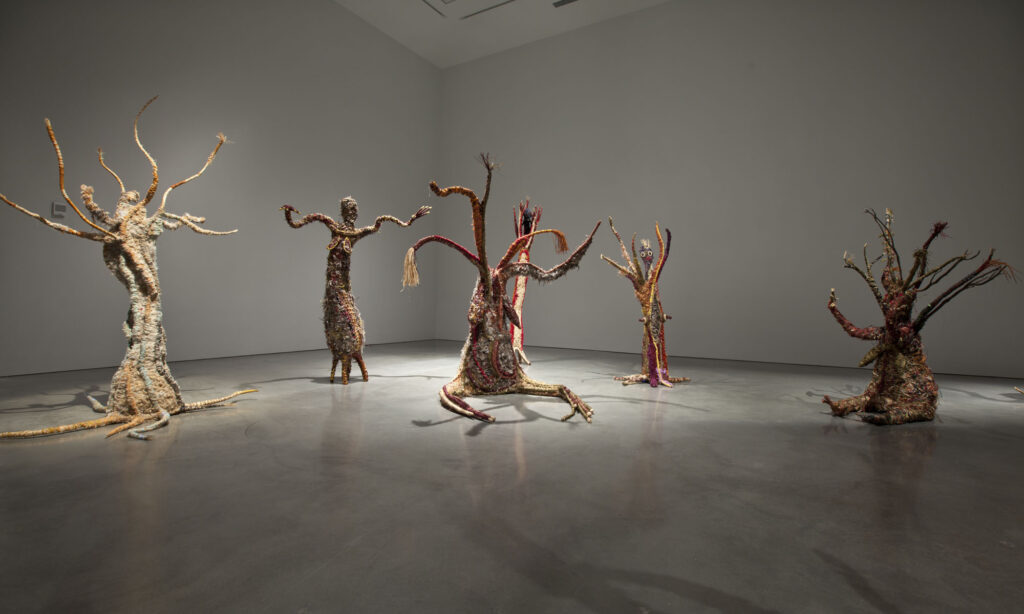Contemporary art is a dynamic and diverse realm of creative expression that reflects the complexities of modern society. It encompasses a wide range of mediums, styles, and ideologies, challenging traditional notions of art and pushing boundaries in innovative ways.

Introduction to Contemporary Art
Contemporary art refers to artworks produced in the present era, typically from the late 20th century to the present day. Unlike traditional art forms that may be rooted in specific movements or styles, contemporary art is characterized by its fluidity and openness to experimentation.
Characteristics of Contemporary Art
Diversity and Plurality
Contemporary art embraces diversity in both form and content, drawing inspiration from various cultures, perspectives, and experiences. It celebrates individuality and encourages artists to explore their unique visions without constraints.
Conceptualization and Innovation
Conceptualization plays a significant role in contemporary art, often prioritizing ideas and concepts over traditional aesthetic qualities. Artists experiment with unconventional materials and techniques, challenging viewers to rethink their perceptions of art.
Technological Integration
Technology has become an integral part of contemporary art, enabling artists to explore new modes of creation and presentation. From digital art and interactive installations to virtual reality experiences, technology offers endless possibilities for artistic expression.
Influential Movements in Contemporary Art
Abstract Expressionism
Emerging in the mid-20th century, abstract expressionism revolutionized the art world with its emphasis on spontaneous, gestural brushwork and emotional intensity. Artists like Jackson Pollock and Willem de Kooning pushed the boundaries of abstraction, paving the way for future artistic movements.
Pop Art
Pop art emerged in the 1950s and 1960s as a response to consumer culture and mass media. Artists such as Andy Warhol and Roy Lichtenstein appropriated images from popular culture, challenging notions of high and low art and blurring the line between fine art and commercialism.
Minimalism
Minimalism emerged in the 1960s as a reaction against the excesses of abstract expressionism. Artists like Donald Judd and Sol LeWitt embraced simplicity and geometric forms, stripping away unnecessary elements to focus on fundamental concepts of form, space, and materiality.
Key Artists and Their Contributions
Andy Warhol
Andy Warhol is one of the most iconic figures in contemporary art, known for his exploration of consumer culture and celebrity. His vibrant silkscreen prints and iconic portraits, such as “Campbell’s Soup Cans” and “Marilyn Diptych,” continue to resonate with audiences worldwide.
Yayoi Kusama
Yayoi Kusama is a Japanese artist known for her immersive installations and repetitive patterns. Her signature polka dots and mirrored rooms, such as “Infinity Mirrored Room – The Souls of Millions of Light Years Away,” create mesmerizing experiences that blur the boundaries between art and reality.
Banksy
Banksy is a mysterious street artist whose politically charged works challenge social norms and authority. Through stenciled graffiti and subversive interventions, Banksy addresses issues such as capitalism, war, and environmental degradation, sparking dialogue and controversy wherever his works appear.
Impact of Contemporary Art on Society
Contemporary art serves as a powerful platform for social and political commentary, sparking conversations and raising awareness about pressing issues. Artists address topics such as identity, inequality, and climate change, encouraging viewers to reflect on their place in the world and envision a better future.
Contemporary Art Market
The contemporary art market is a multi-billion-dollar industry driven by collectors, galleries, and auction houses. Works by renowned artists command staggering prices, while emerging artists navigate the challenges of gaining recognition and financial stability in a competitive market.
Challenges and Controversies in Contemporary Art
Contemporary art is not without its controversies, as artists push boundaries and challenge societal norms. Debates surrounding cultural appropriation, censorship, and the commodification of art raise important questions about ethics, representation, and artistic freedom.
Future Trends in Contemporary Art
As society continues to evolve, so too will the landscape of contemporary art. Artists are increasingly turning to environmental and social activism, harnessing their creative talents to address urgent global challenges. Meanwhile, advancements in technology are opening up new possibilities for immersive and interactive art experiences.
Conclusion
Contemporary art is a reflection of our ever-changing world, capturing the complexities and contradictions of modern life. Through experimentation, innovation, and social engagement, artists push the boundaries of what is possible, inspiring us to see the world in new and unexpected ways.
FAQs
- What defines contemporary art? Contemporary art encompasses artworks produced in the present era, typically from the late 20th century to the present day. It is characterized by its diversity, experimentation, and openness to new ideas and technologies.
- How does contemporary art reflect society? Contemporary art serves as a mirror to society, addressing pressing issues such as politics, identity, and the environment. Artists use their work to spark dialogue, challenge norms, and provoke thought about the world we live in.
- What role does technology play in contemporary art? Technology plays a significant role in contemporary art, enabling artists to explore new mediums, techniques, and modes of presentation. From digital art and virtual reality experiences to interactive installations, technology offers endless possibilities for artistic expression.
- Why is contemporary art important? Contemporary art is important because it reflects the cultural, social, and political realities of our time. It challenges us to think critically, engage with complex ideas, and consider different perspectives, ultimately enriching our understanding of the world around us.
- How can I engage with contemporary art? There are many ways to engage with contemporary art, from visiting galleries and museums to attending artist talks and exhibitions. Additionally, online platforms and social media provide opportunities to discover and interact with a diverse range of contemporary artworks and artists.
